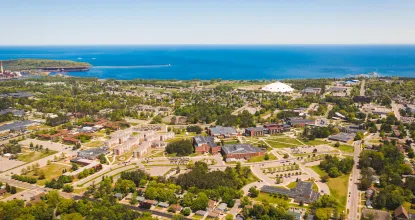Biomedical and Forensic Research
Human biology research for biomedicine and forensics are important areas of research at NMU. Several labs work on projects related to human health and often collaborate with researchers at other institutions, including hospitals. Broad areas of work range from microbiological disease research to the mechanisms underlying neurological disorders. Likewise, ongoing collaborations with scientists at NMU's Forensic Anthropology Research Facility are making contributions to forensic science.
Role of neurotrophic factors in motorneuron disease and muscular dystrophy (March 2021)
The Ottem Laboratory is interested in a class of proteins, neurotrophic factors, whose disruption is recognized as playing a role in progressive neuropathy and myopathy observed in motorneuron diseases (MNDs) and some muscular dystrophies (MDs). A specific neurotrophin, brain-derived neurotrophic factor (BDNF), is essential for normal functioning of neuromuscular systems and is present in both motorneurons and muscles. BDNF acts as a bi-directional messenger to convey signals that the motor unit is working and should be maintained. While many studies have focused on the role that disrupted motorneuron-produced BDNF has on the progression of NMDs, the contribution of BDNF made by muscles to the health of the motor unit remains unclear. Our laboratory utilizes transgenic mice that are missing the BDNF gene only in skeletal muscle fibers. Behavioral and pathological data indicate these mice suffer from progressive myopathology and an adult-onset loss of neuromuscular functioning, similar to established models of neural-based neuromuscular diseases such as amyotrophic lateral sclerosis (ALS). These mice present the possibility that there may be a distinct muscle origin of some types of adult-onset loss of neuromuscular function that also leads to the atrophy of motorneurons. We are currently investigating the interplay of muscular BDNF loss and presynaptic mitochondrial dysfunction in the onset of neuromuscular pathology. Additionally, we are investigating the effect of muscular BDNF loss on retrograde transport processes in the axons of motorneurons.
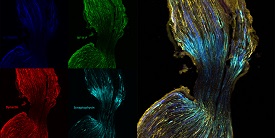

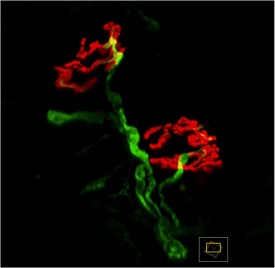
Effects of freeze-thaw cycles on bone (October 2024)

The Juarez laboratory is excited to begin a multi-approach analysis of the effects of freeze-thaw cycles on skeletal tissue. Osseous samples from skeletal donors are currently being collected to begin pilot data collection. These samples will be analyzed macroscopically, radiographically, and histologically to evaluate morphological, volumetric, and cellular changes through time. The data collected from this and future studies will contribute to the cold-weather research literature, to include practical applications in a medico-legal context. NMU’s northern latitude provides an unmatched opportunity currently available to many researchers and students in this field to study the decomposition process, including skeletal changes, during freeze-thaw cycles.
Botany & Agriculture Research
Plant science is a growing area of research at NMU. While many projects relate to the Medicinal Plant Chemistry program, others are related to local food science. Basic science research in plant ecology, plant physiology, and microbial interactions with plants are also strong areas of interest in our department.
Vermicompost and Hydroponics, March 2021
Chelsea Pearson and Rochelle Gawel (Biology - Botany Concentration) were recently awarded a Scheidemantel Research Grant Award to support their research on “Effects of Vermicompost and Beneficial Microbes on Nutrient Density in Pak Choy (B. rapa var. chinensis) in a Vertical Hydroponic Grow Tower Environment”. This research endeavor is addressing the problem that it is not possible to grow crops year-round in northern, zone 4 climates using conventional agricultural practices. Additionally, current industrial agricultural methods have a negative impact on the nutritional content of food, the health of the soil and the ecosphere. One solution to these issues is indoor agriculture and the use of vertical hydroponic grow towers. This plant growth system demands less space and inputs of resources and is a more sustainable method of agriculture compared to industrial agricultural practices. Through Chelsea’s DIY skills and creativity, a six-tower hydroponic grow system was manufactured. This year-long BI 488 Advanced Research in Biology project is investigating the impact of “worm tea” on plant growth. This “tea” is made from extracting organic nutrients and beneficial microbes from worm castings using aerated water. Can the input of this amendment increase the plant biomass and nutrient density of Pak Choy compared to plants grown under standard hydroponic mineral inputs? The data and knowledge obtained from this research will contribute to the emerging field of sustainable crop production through the use of indoor hydroponic systems.
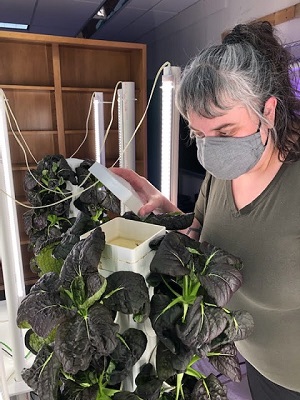
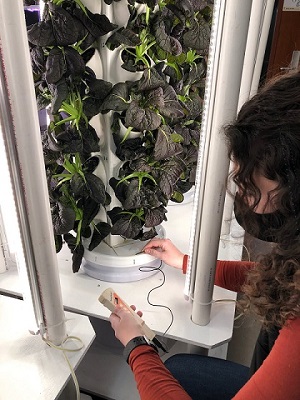
Conservation & Management Research
The Biology Department fully engages in conservation research related to the preservation and restoration of natural systems. We also study human management of natural resources through research projects, often in collaboration with management agencies. These projects often cut across taxonomic lines and investigate how organisms are being affected by human activities at both the local and global level.
Brown bear gut microbiome (November 2021)
Sarah Trujillo recently completed her MS thesis studying the ecological causes and consequences of gut microbiome variation in brown bears across Alaska. Gut microbiomes (GMBs), complex communities of microorganisms inhabiting the gastrointestinal tracts of their hosts, perform countless micro-ecosystem services such as facilitating energy uptake and modulating immune responses. While scientists increasingly recognize the role GMBs play in host health, the role of GMBs in wildlife ecology and conservation has yet to be realized fully. As a collaborative initiative with scientists at the National Park Service, US Fish and Wildlife Service, and National Oceanic and Atmospheric Administration, her findings will be integrated directly into federal decision-making regarding the conservation and management of brown bears.

American Marten Ecological Response to Climate Change (March 2021)
The American marten (Martes americana) is a species of cultural significance to Indigenous people across much of North America and historically was one of the most valuable furbearer species before overexploitation and habitat loss due to timber extraction resulted in this elusive forest carnivore being listed as threatened across substantial portions of their range. Across Alaska, however, American marten populations have historically and continue to occur at densities that permit a substantial annual harvest. The Wildlife Ecology and Conservation Science Lab at NMU is collaborating with Alaska Department of Fish and Game to take advantage of the annual American marten harvest in Alaska to collect data and biological samples from legally harvested animals (e.g., sex, reproductive condition, body condition, diet). With more than 10 years of American marten data and samples, we are examining how variation in American marten reproductive condition, physiological condition, and diet vary with ongoing climate change. Our finding will be used by Alaska Fish and Game wildlife managers to make science-informed decisions regarding the future of American marten harvest management. To learn more about this collaborative initiative visit: www.wecoslab.com
Beaver response to predator urine (Feb 2021)
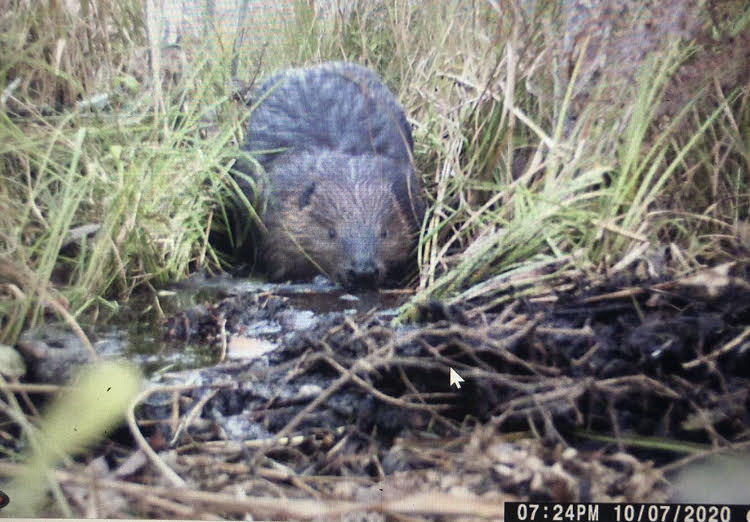 Beavers are an important ecosystem engineer. They create and maintain ponds and wetlands, which provide habitat for many species of wildlife. However, flooding as a result of dam building can damage human infrastructure. Lethal management isn't a bad thing, but it isn't always effective. Graduate student Jennifer Gendelman is studying how beavers respond to predator urine on their active foraging trails with Dr. John Bruggink. Her results will provide insight on a management strategy to mitigate human-beaver conflict. Since beaver activity varies seasonally, Jen is testing if the effects of the urine treatment differs in the spring vs. fall. She will also observe if beavers become habituated to the treatment. Beaver responses to the urine will be monitored using trail cameras.
Beavers are an important ecosystem engineer. They create and maintain ponds and wetlands, which provide habitat for many species of wildlife. However, flooding as a result of dam building can damage human infrastructure. Lethal management isn't a bad thing, but it isn't always effective. Graduate student Jennifer Gendelman is studying how beavers respond to predator urine on their active foraging trails with Dr. John Bruggink. Her results will provide insight on a management strategy to mitigate human-beaver conflict. Since beaver activity varies seasonally, Jen is testing if the effects of the urine treatment differs in the spring vs. fall. She will also observe if beavers become habituated to the treatment. Beaver responses to the urine will be monitored using trail cameras.
Burbot Egg Biopsy (Jan 2021)

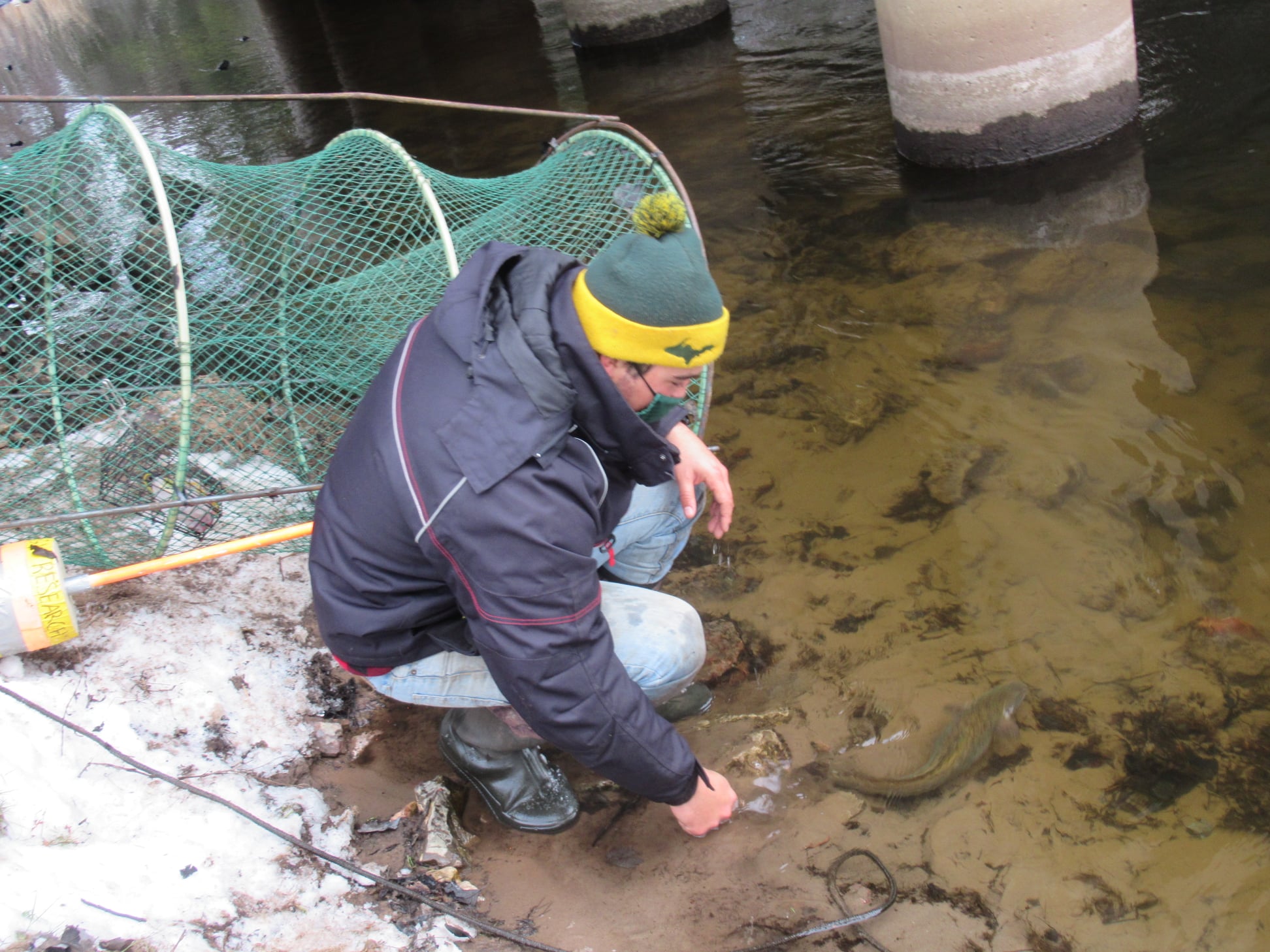
Undergraduate Michael Woodworth has been working with Dr. Jill Leonard's lab to develop a new sampling protocol for wild burbot, a large coldwater fish native to the Great Lakes. Burbot are typically fished for during their spawning period in midwinter via ice fishing in both inland lakes and Great Lakes. There are also migratory runs that occur in local rivers. One of the management challenges with burbot is that it is hard to determine exactly when and where they are spawning. They appear to have a very short spawning period and spawning likely occurs in locations different from where most ice fishermen encounter them. The species is generally only modestly targeted by fishermen, but fishing pressure is increasing and understanding more about their reproductive biology will be useful for management. Woodworth is testing out a procedure where eggs can be collected from adult females prior to their final maturation; this procedure has previously only been done under hatchery conditions. The idea is to be able to use these egg biopsies to estimate how much more time the fish will need to ripen her eggs before actually spawning. Importantly, this egg biopsy does no harm to the fish who is released to spawn later. Developing this protocol is giving the Leonard lab a new tool to evaluate fish that are caught by fishermen and by the lab itself.
Ecology & Evolution Research
The study of the interrelationships of organisms with their environment, ecology, is a core discipline in our department with many laboratories studying many different systems. Projects are wide ranging from the response of northern animals to winter conditions to understanding the linkages between primary production and aquatic insect habitat use. Similarly, evolution is the fundamental principle of biology and it is also a focus of work in many of the research groups in the department. Projects range from understanding the drivers of animal speciation to the origin and maintenance of complex animal behaviors.
Black and Brown Bear Foraging Ecology, March 2021
One of Darwin’s (1859) greatest insights was recognizing that species were not homogeneous units of ecologically equivalent individuals but that individual’s differ in traits such as sex, age, morphology, physiology and behavior and that these differences provide the substrate on which natural selection can act. In this time of unprecedented global change, understanding among-individual differences in food resource use is fundamental for safeguarding the critical resources diverse individuals need for responding to environmental change, particularly for populations of conservation and management concern. In collaboration with scientists at the Alaska Department of Fish and Game and the National Park Service, the Wildlife Ecology and Conservation Science Lab at NMU is using stable isotope analyses of biological tissues (e.g., claws, hair, muscle tissue) to evaluate the diet of American black bears (Ursus americanus) and brown bears (Ursus arctos) across Alaska. To learn more about this research initiative visit: www.wecoslab.com
Snowshoe Hare Ecology and Behavior, March 2021
Wildlife populations will respond in one of three ways to rapid climate change: move, adapt, or die. However, the potential for local adaptation through either behavioral modification or natural selection is poorly understood and rarely considered in the context of conservation planning despite the selective pressure that climate change inflicts on diverse species. As one of ~21 species worldwide that relies of camouflage for survival, snowshoe hare (Lepus americanus) are an exciting eco-evolutionary model to investigate the response of seasonal coat color changing species to climate change. The Wildlife Ecology and Conservation Science Lab collaborates with a diverse network of scientists across the United States and around the world to experimentally investigate morphological, physiological, and behavioral responses of snowshoe hare to rapid climate change as well as contributing to studies applying cutting-edge tools such as next-generation sequencing, transcriptomics, and hormonal assays to unravel the genetic and hormonal basis of seasonal coat color change. To learn more visit: www.wecoslab.com
Animal movement behavior analysis with Ethovision (Feb 2021)
Some of the undergraduate researchers in the Leonard Lab have been working hard to conduct studies evaluating different factors affecting fish behavior. In one study, they are interested in whether brook trout can detect the chemical firefoam used in fighting wildland fires (hint: they can) while in another they are evaluating personality differences in native strains of trout that hatch from larger or smaller eggs (hint: the fish from big eggs are braver). For both these projects, we have thrilled to have been able to acquire a new data acquisition system that uses the program Ethovision to track fish using video recordings. This system is amazing as it can follow an individual fish (or several in a group) and calculate time spent in particular areas, speed, activity levels, and many other behavioral metrics. We look forward to using this with many projects in the lab! This system can be used with any moving organism so it may well be used in other laboratories in the department as well.
The screenshots below show the analysis screen with a photo of a video with a brook trout in a behavioral testing arena avoiding our test substance (firefoam) and a heat map of the locations used by this fish in the area that is derived by Ethovision analysis of the video (source: undergraduate NMU student Josh Perry)
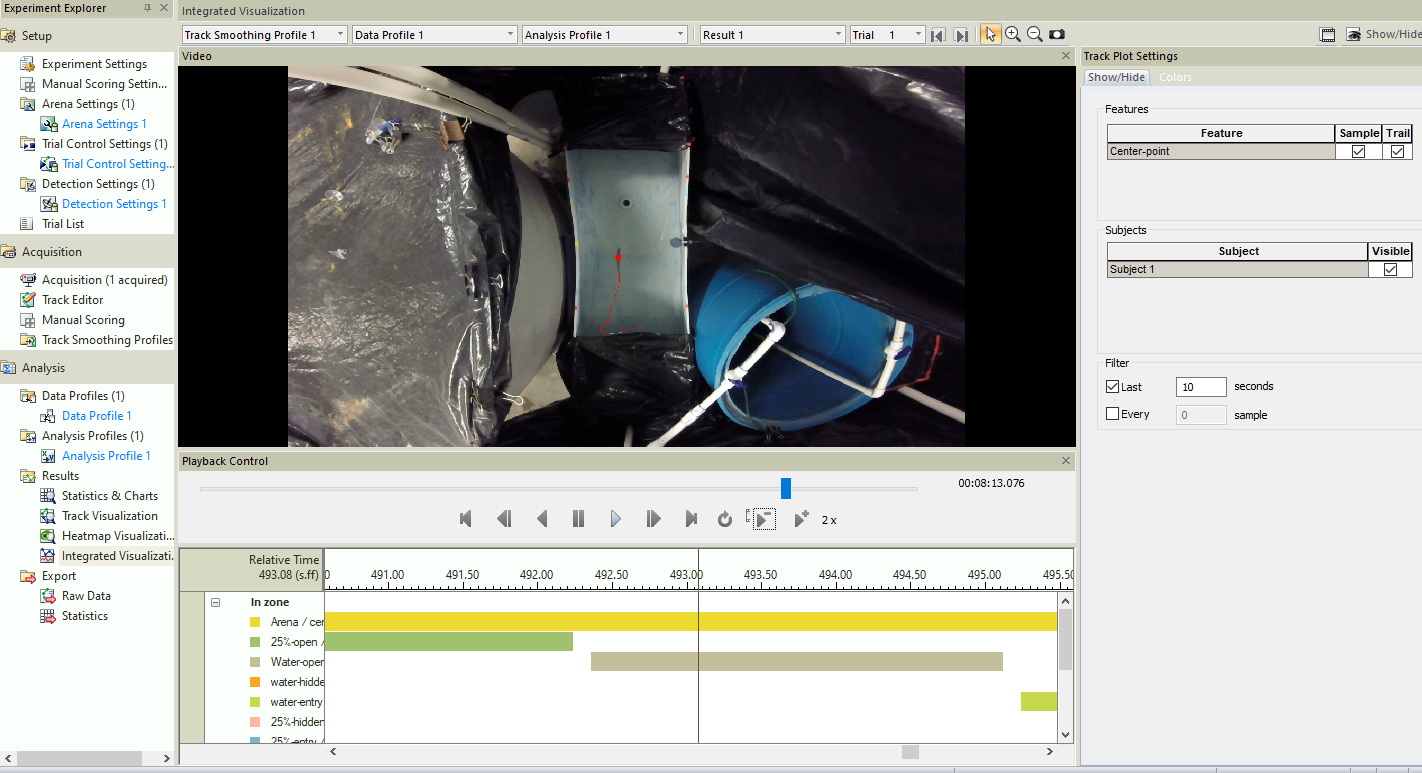
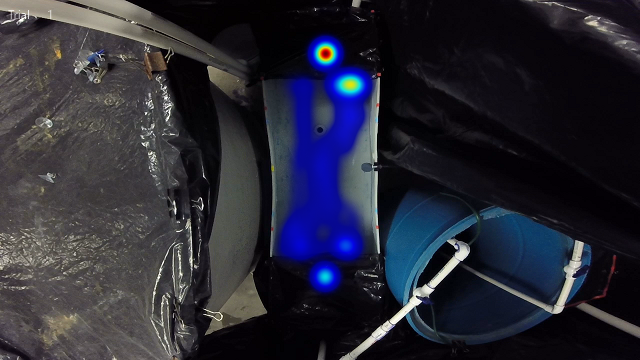
Historical biogeography of pikas and their parasites (October 2024)
Kurt Galbreath is working with former NMU undergraduate student Annika Desai to investigate the biogeographic histories of pikas, small rabbit relatives that live in North America's western mountains and across Central Asia and Siberia, by studying the roundworms that live in their intestines. Molecular phylogenetic analyses of 3 major lineages of roundworms are corroborating evidence from other parasites that suggest that there have been at least 2 major historical episodes of colonization from Asia into North America, with an additional period of more limited exchange during the last glacial period. Pikas and their parasites entered North America by traversing the Bering Land Bridge, which became available when sea levels dropped as climate cooled and glaciers expanded at various times during the last few million years.

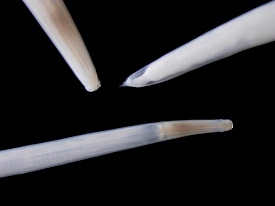
Ecology of burying beetle parental care (October 2024)
Parental care is thought to evolve to buffer offspring development from hazardous environments. Yet hazardous environments are ubiquitous for young and parental care is a relatively rare strategy across taxa. Thus, it is perplexing how and why parenting evolves. In the Potticary lab, we are investigating the ecology and function of parenting using burying beetles of the genus Nicrophorus as a study system. Understanding the ecology of parental care is particularly important because, by definition, parenting influences offspring development. Climate change is expected to increase environmental variability. For this reason, the reciprocal interaction between parenting and environmental change may have significant
effects on both fitness and population dynamics through their impact on developing young.
Burying beetles are a model system for the evolution of parental care (Fig. 1). Burying beetles prepare “nests” out of small vertebrate carrion, where they provision and protect their developing larvae. Despite decades of laboratory research on burying beetles, little is known about their ecology or behavior in a wild setting. There are over 70 extant species of burying beetles that occur across habitats and exhibit variation in parental care behavior, including seven species that occur locally to Northern Michigan University. This provides a unique opportunity to determine the relationship between parental care and ecology. The Potticary lab, including undergraduates Hermione Morales, Mollie Haremza, and Olivia Foster (Fig. 1), are currently establishing field sites and a laboratory colony of burying beetles to identify the ecological conditions that influence the evolution of parenting strategies and elucidate natural history
for local species.

Figure 1. Nicrophorus burying beetles are cool! A) We set up hanging traps for burying beetles, baited with small amounts of meat. The volatiles emitted by decomposition bring the beetles in. B) N. vespilloides mother regurgitating food to her young on a carcass nest. Photo credit Allen J. Moore. C) Hermione Morales, Mollie Haremza, and Olivia Foster out in the field at Longyear Forest, capturing and measuring burying beetles.
Neuroscience Research
NMU Biology partners with the Department of Psychological Sciences to offer a major in Neuroscience and also conducts research on the functioning of the brain in several laboratories. This work may focus on molecular mechanisms of neuron function or expand out to evaluate neurological controls of behavior.
Interdisciplinary Research
Biologists are active across campus, around the country and the world. While much of the research being done in the department is strictly biological in nature, biologists sometimes engage in truly interdisciplinary projects, often partnering with colleagues in different departments or off campus. These projects can be a little offbeat and unusual, but are always interesting! This diversity of activity enriches the department and helps make our group active and engaged with our community.
Researching Strategies for Improving Student Success in Introductory Biology Courses (Fall 2024)
Some students face significant academic challenges when in college, particularly in large enrollment introductory STEM courses like biology. With limited background knowledge about college science course expectations, students may struggle with managing their learning. The struggle can be especially apparent related to planning, monitoring, and evaluating study strategies, a subset of metacognitive skills—crucial for academic success but often overlooked. Lacking these strategies can cause stress and underperformance. The integration of metacognitive skills as educational support for first-year biology students has the potential to support students, particularly in high-stakes STEM fields like biology.
Angela Mohrman, an instructor in the biology department, has an educational background in neurobiology and STEM education, which informs her research examining student populations in NMU's large enrollment introductory biology courses. The purpose of this research is to identify key student needs and strategies to delineate any unknown barriers or benefits through the lens of instructional strategies that emphasize metacognition, the goal of this research is to identify ways to increase student engagement and enhance retention, ultimately supporting student success.
Art Meets Science (Feb 2021)
Who would have known that a cold call from a stranger at an art museum would have led Dr. Jill Leonard to the start of a project that has now been running, in various incarnations, for years? Dr. Leonard was originally contacted by the Grand Rapids Art Museum (GRAM) about providing information for an artist who would be traveling through the Great Lakes region learning about this place we call home as research for a series of paintings commissioned by the GRAM. Dr. Leonard was among many people that Alexis Rockman, a New York-based fine artist specializing in environmental art, talked to on his trip. Hitting it off well after coffee at Starbucks, the pair stayed in touch as Rockman developed and completed his paintings. The series, The Great Lakes Cycle, debuted at the GRAM in 2017 and then proceeded on a multi-year, multi-city tour throughout the Great Lakes region. At the same time, Dr. Leonard developed a collaboration with the NMU School of Art & Design, and especially painter/professor Taimur Cleary, to bring Rockman to NMU for a Artist in Residence program specifically aimed at drawing together students from the arts and the sciences.
Cleary and Leonard extended this program through a PRIME grant which allowed them to create an Online Education E-Text called A Deep Dive into The Great Lakes Cycle. The etext offers subscribers a resource that provides extensive background to the major paintings in the Great Lakes Cycle in a highly visual and engaging way. It includes background on science, art, history and social themes in the paintings augmented by video interviews with scientists from around the region working on the issues represented. The etext is highly visual and includes historical and artistic images that provide background for Rockman's art and the concepts he portrays. This resource is available to anyone, but has been used by educators in a variety of settings ranging from the Grand Rapids Public School system to the U.S. Coast Guard Academy. If you are interested in subscribing to this etext, click here for more information.
Cleary and Leonard developed an asynchronous online course that was first offered in Summer 2021 entitled INTT 222: Art Meets Science that expands on the theme of the relationship between art and science. The course touches on Rockman's work, but really expands away from it to look at this history of the relationship between these two disciplines. Students are then shown how to develop their own ideas about integrating science and art and the course culminates in individual projects where the students integrate science and/or art into their own discipline. The course is designed for students of any major or interest area and seeks to have them think integratively in order to break down barriers to creativity and appreciate the benefit of incorporating multiple disciplines into their own academic and professional path. Anyone interested in enrolling in this course should check the NMU registration process and Bulletin through the NMU Office of the Registrar. If you have questions, feel free to contact Dr. Leonard at jileonar@nmu.edu.

